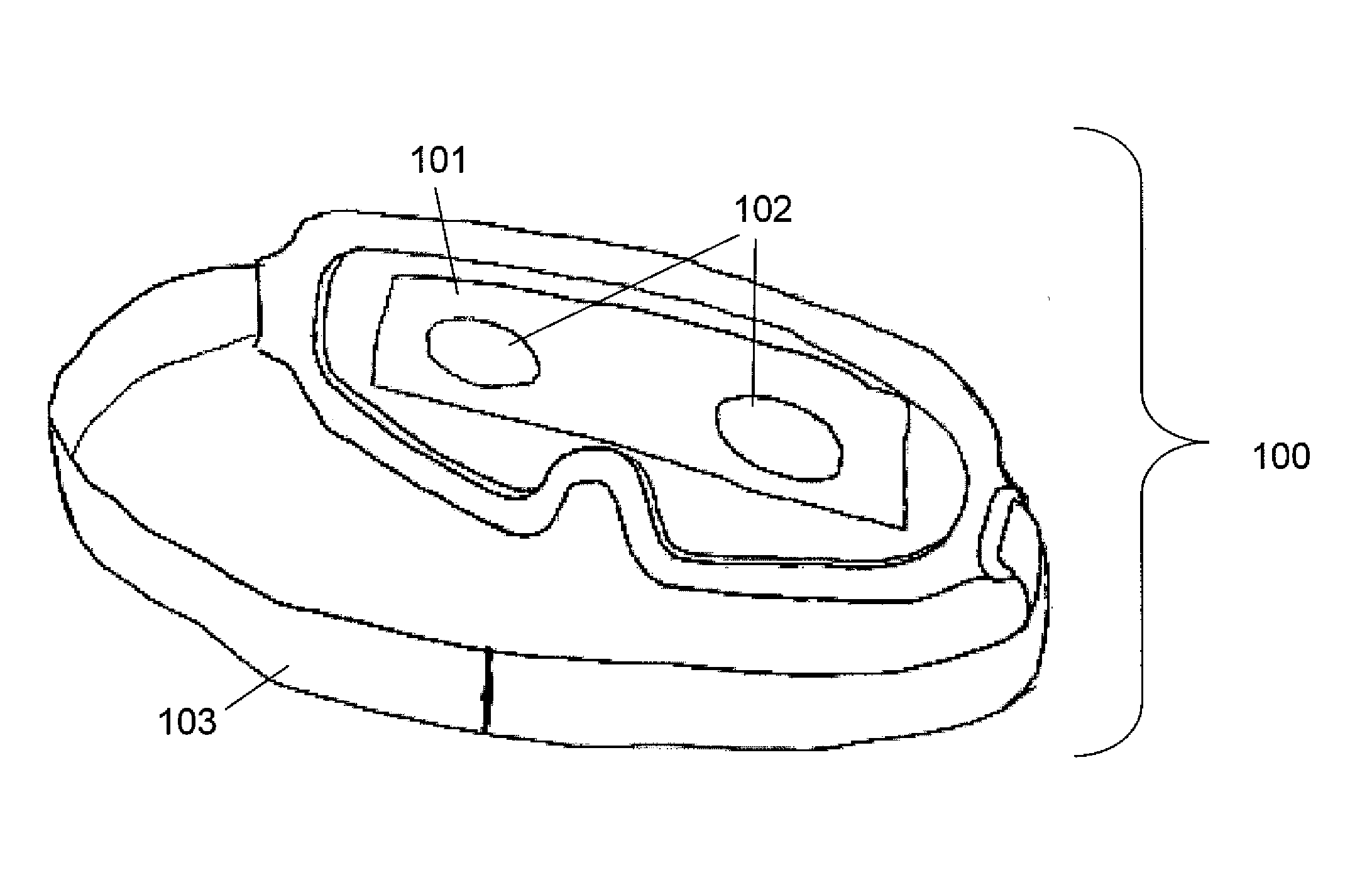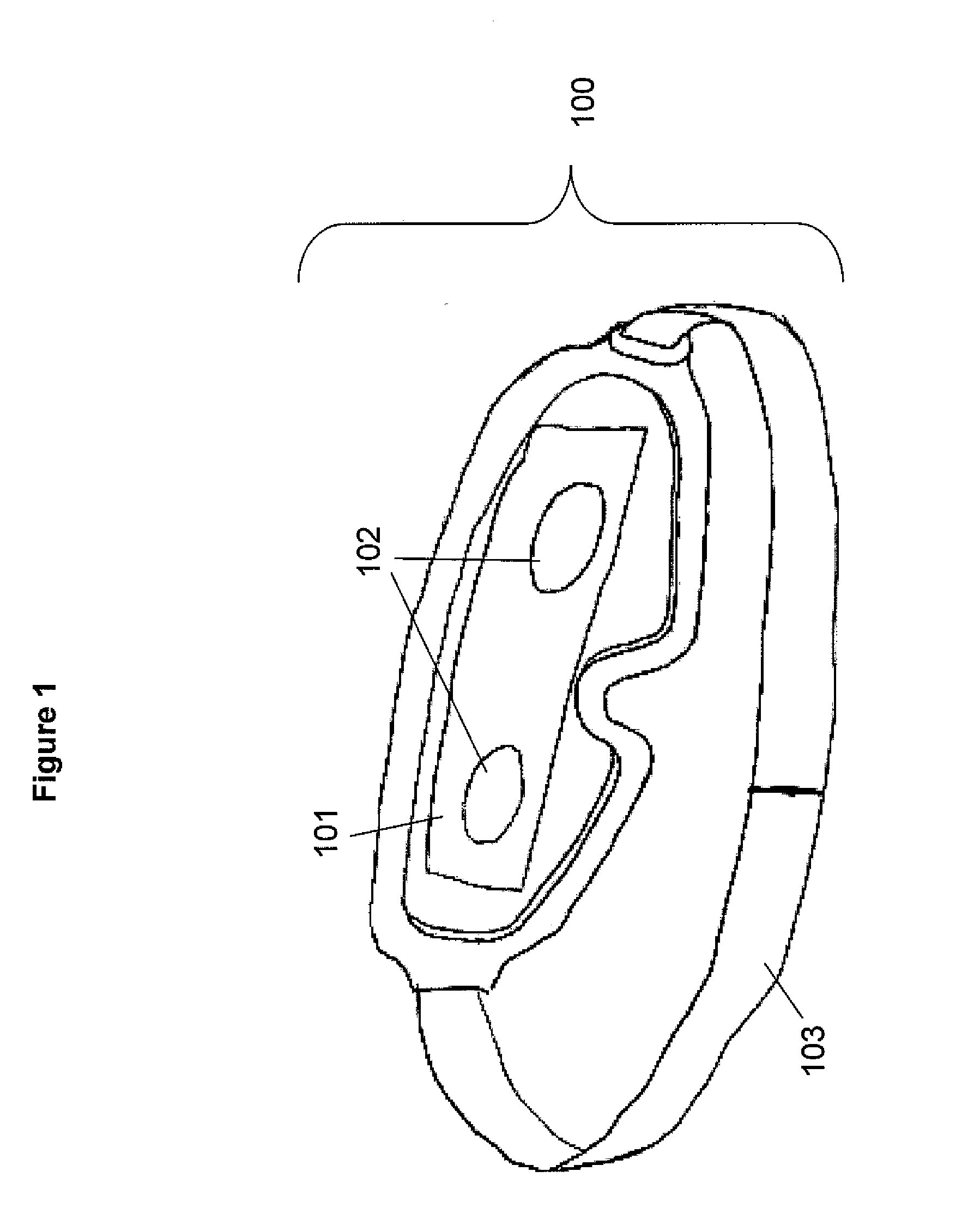Lightguide phototherapy apparatus
a lightguide and phototherapy technology, applied in the field of lightguide phototherapy apparatus, can solve the problems of cumbersome wearer, reduced light intensity per unit area, and difficulty in adjusting the lightguide, so as to reduce the heat dissipation per unit area, reduce the effect of light intensity generated per unit area
- Summary
- Abstract
- Description
- Claims
- Application Information
AI Technical Summary
Benefits of technology
Problems solved by technology
Method used
Image
Examples
example 1
Retinopathy Device
[0096]In patent application GB2410903A, Arden describes an eye mask device using inorganic LED light sources to illuminate the eyes of patients suffering from retinal diseases during their sleep. Because the treatment is carried out during sleep a phototherapy device with minimum discomfort for the user is advantageous. Because of the low light intensity required and the long illumination time available a passive phototherapy device using luminophore for slow release of light is particularly suitable. This example describes such device.
[0097]A light guide sheet element (less than 2 mm thick in thickness) could be moulded in the shape of an eye mask as to cover the eye of a patient as shown in FIG. 1. The element is formed by injection moulding silicone resin containing 0.1% of Lumogen F Green 850 (BASF). The light guide is coated on both sides with a 5 microns thick lower index polymer such as polychlorotrifluoro-ethylene.
[0098]A blue light emitting OLED is formed ...
PUM
 Login to View More
Login to View More Abstract
Description
Claims
Application Information
 Login to View More
Login to View More - R&D
- Intellectual Property
- Life Sciences
- Materials
- Tech Scout
- Unparalleled Data Quality
- Higher Quality Content
- 60% Fewer Hallucinations
Browse by: Latest US Patents, China's latest patents, Technical Efficacy Thesaurus, Application Domain, Technology Topic, Popular Technical Reports.
© 2025 PatSnap. All rights reserved.Legal|Privacy policy|Modern Slavery Act Transparency Statement|Sitemap|About US| Contact US: help@patsnap.com



